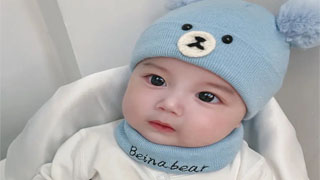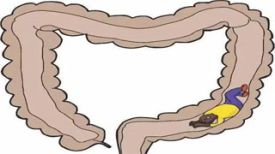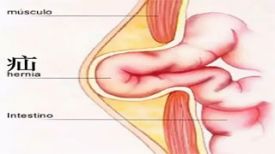
Article excerpt: "Traditional Chinese Medicine Ancient Methods for Infant and Child Health Preservation"
Cold wheezing and hot wheezing
Traditional Chinese medicine pays great attention to an individual's physical condition. For example, if you are also thirsty, Western medicine will not ask if you prefer to drink hot or cold, but traditional Chinese medicine must ask. There is an absolute difference between liking to drink hot and liking to drink cold. Liking to drink hot also indicates a cold constitution, so we need to use warm medicine.
If you like to drink cold, it may indicate Yin deficiency, internal heat, or other symptoms of excess heat. We need to use heat clearing drugs, and the medication approach is completely different for different constitutions. Therefore, traditional Chinese medicine focuses more on individualization and personal feelings. Similarly, when going to see a Western doctor, they won't ask if the runny nose is watery, sticky, or yellowish.
Therefore, from the perspective of traditional Chinese medicine, asthma is also divided into cold and hot.
Cold wheezing
It is a cold type of asthma, characterized by coughing and wheezing first, followed by wheezing sounds in the throat. Similar to the symptoms of hot asthma, the difference is that cold asthma has phlegm, which is white in color, thin and sensitive to cold, and has a clear colored nasal discharge.
Dietary therapy method: ginger, radish, and walnut soup.
Three slices of ginger, cut into shreds, half a radish root, sliced, ten walnuts, and 5 grams of almonds. Put these ingredients in a pot, add two bowls of water, bring to a boil, and simmer over low heat for another 20 minutes. Take warm clothes half an hour after meals, half a bowl each time.
Hot asthma
Heat asthma is also known as hot asthma, which is characterized by coughing and wheezing. There are phlegm sounds in the throat, but the phlegm sounds in hot asthma are thicker and louder, while those in cold asthma tend to be more inward and less intense.
In addition, the phlegm from hot wheezing cough is sticky, thick, and yellow. Full chest, stuffiness, irritability, fever, red face, dry mouth and tongue, yellow urine, dry stool, constipation, sticking out the tongue to look at the throat, and redness are all manifestations of heat syndrome. yes. The stool is dry and there is constipation. Some children may experience this condition, which belongs to fever. Children may have more heat induced asthma.
Dietary therapy method: Raw gypsum radish soup.
15 to 30 grams of gypsum, one white radish, sliced, 5 to 10 grams of almonds, and 5 to 10 grams of dried tangerine peel. Three bowls of water, boil for about 15 to 20 minutes, and drink half to one bowl each time. The younger child drinks less and the older child drinks more.
Deficiency asthma
If a child has recurrent asthma attacks, it may be due to weak physical condition. This type of child has a poor physical condition, a low cough sound, a dull complexion, is prone to sweating, afraid of cold, has a sore waist and feet, is tired and weak, and does not like to eat.
Food therapy: Congee with yam and walnut kernel.
30 grams of yams, 10 pieces of walnut kernels and 50 grams of japonica rice will be used to cook Congee.
Yam is beneficial for the spleen and lungs, while walnut kernels can warm the kidneys. Walnuts themselves are relatively moisturizing and have a great effect on children with dry stools. Japonica rice can nourish the lungs and is very effective as an auxiliary dietary therapy for children with weak constitution and asthma.
Treatment methods for asthma remission period
There are many types of asthma relief periods, and some children tend to have lung deficiency. Children with lung deficiency are prone to recurrent colds, weak coughing, low voice, and often trigger asthma with changes in climate, which belongs to lung qi deficiency.
The second type is spleen and stomach deficiency. Children with spleen and stomach deficiency do not like to eat, have poor appetite, have loose or dry stools, have irregular dryness and thinness, cough and phlegm, have a pale face, and look particularly fat when they stick out their tongue. There are also tooth marks next to them. These are all patients with body deficiency. Their bodies are relatively thin and weak, which is spleen deficiency.
There is also a type of kidney deficiency. Children with kidney deficiency are prone to bedwetting, frequent urination, weak and weak feet, palpitations, heartbeats, spontaneous sweating, and night sweats at the slightest movement, all of which belong to kidney deficiency.
Food therapy: Congee with yam, walnut and lily.
50 grams of yam, 10 walnuts, and 10 grams of lilies. Boil water and warm it up for 15 to 20 minutes.
Both the elderly and children are suitable for drinking this soup. The whole family can drink it together. Lily moistens the lungs, yam nourishes the spleen, walnuts benefit the kidneys, and the lungs, spleen, and kidneys are in harmony. It is suitable for all ages.
Prevention of Asthma
1. A gentleman should focus on the foundation, and the Tao should be born from the foundation. Starting from the foundation, treatment and treatment should be carried out. For those who feel disharmony between the spleen and stomach, adjust the spleen and stomach; for those who lack lung qi, supplement the lung qi; and for those who lack kidney qi, supplement the kidney qi. Once the righteous qi is sufficient, there will be the ability to resist external pathogens, and asthma will not recur.
2. Before conditioning, it is important to avoid allergens such as pollen, seafood, and eggs that contain different proteins and mites. When it comes to mites, it is important to supplement them by regularly sun drying the bedding during good weather. The content of mites in the bedding is quite high, and the difference between sun exposure and non sun exposure is significant. It is necessary to use sunlight and ultraviolet radiation regularly to kill bacteria.
3. Keep the home clean and free from dust, and also avoid pests such as cockroaches.
4. Avoid passive smoking and smelling paint, as these can easily trigger asthma attacks.
Asthma care
1. Do not drink cold drinks. Traditional Chinese medicine attaches great importance to this point, that is, "drinking cold drinks can harm the lungs". Especially cold drinks taken out of the refrigerator, if consumed frequently, can cause lung coldness, trigger bronchial spasms, and once spasms occur, it can lead to asthma.
2. To prevent respiratory infections, we can smoke some vinegar at home in winter and spring. Do not go to crowded places. The air should be well ventilated, with good humidity and temperature to prevent colds.
3. Avoid fatigue. Some children may become extremely tired after playing all day, which can easily trigger asthma. Laughing or shouting loudly can also damage the lungs.
4. Do not get caught in the rain or engage in vigorous activities, as breathing becomes rapid immediately after intense activity. Rapid breathing can cause the impact of respiratory airflow and easily lead to asthma.
5. Avoid mental stimulation, because the human mind is connected to the nerves of the internal organs. When a person is angry, they don't like to eat, which can cause poor functioning of the internal organs. If a child is scared, wronged, cries, and has a bad mood, it is easy to cause asthma. Therefore, do not give them any mental stimulation.
6. Fu Tie, a preventive method in traditional Chinese medicine. Go to the hospital to apply summer patches during the dog days or dog days. Applied to acupoints such as Feishu and Dingchuan, the medicinal ingredients inside are very helpful for the recovery of lung qi.
Disclaimer: This article is a sharing of health knowledge. The drugs, prescriptions, acupuncture and moxibustion and other treatment and health preserving methods mentioned in this article should be applied under the guidance of professional doctors, and should not be applied by yourself. We are not responsible for any issues arising from improper use.


